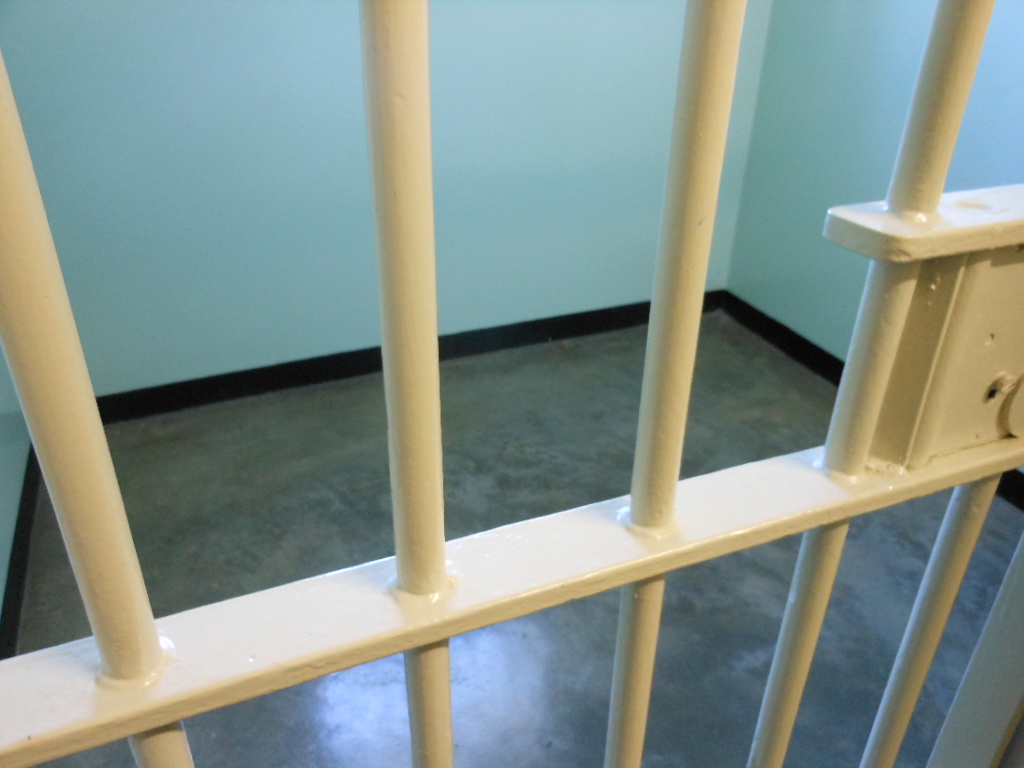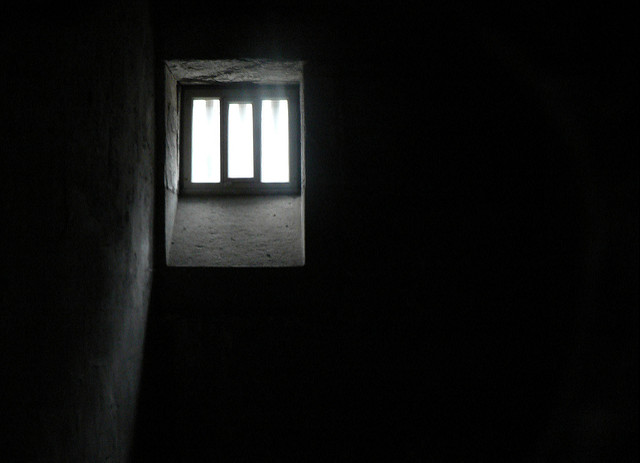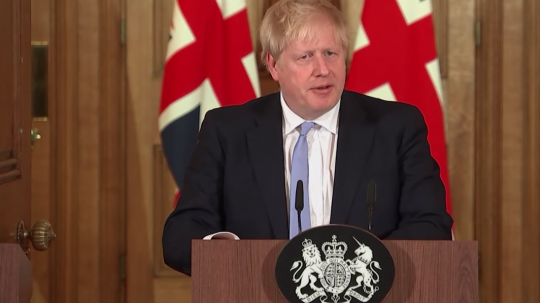As the coronavirus spreads through Britain’s jails, the government has announced plans to temporarily release as many as 4,000 low-risk inmates and build 500 new cells. But is this enough to protect the more than 83,000 people living in the UK’s overcrowded prison estate?
Ministry of Justice figures reveal that ten prisoners have died from coronavirus as of last Tuesday (7 April). It has been estimated that, without measures to protect inmates, the total number of avoidable deaths could exceed 800.
Meanwhile, two staff members at London’s Pentonville Prison died last week. More than 7,000 staff members across the country are in self-isolation, according to Steven Gillan, head of the Prison Officers’ Association.
“We need the government to make key decisions about reducing the prison population so that it saves my members’ lives and, indeed, those in our care,” he told Sky News on Tuesday.
He warned that “there can be no chance here for playing Russian roulette with the safety” of prison staff and inmates.
People in prisons are especially vulnerable to the spread of Covid-19. With several prisons in England and Wales operating at more than 150 percent of their capacity, overcrowding makes “social distancing” inherently difficult.
Meanwhile, poor hygiene standards could make the spread of the highly infectious virus even more rapid.
In a letter to the justice secretary, Robert Buckland, the Howard League for Penal Reform’s Frances Crook wrote: “Many prisons are filthy and disgustingly unhygienic. Staff, visitors and inmates are not able to wash and soap is frequently impossible to obtain. Lavatories and sinks are ingrained with years of human waste.”
A report by Professor Richard Coker, from the London School of Hygiene and Tropical Medicine, warns that “the challenges in preventing prisoners from becoming exposed are likely almost insurmountable” and urges authorities to consider “alternative options to incarceration where feasible”.
The right to health
The right to health is recognised and protected as a fundamental human right by numerous international treaties. We all have a right to health, including prisoners.
Though limits are placed on prisoners’ other rights – such as liberty, privacy and property – the right to health does not disappear just because someone has been jailed. This includes the right to prevention, treatment and control of diseases, and equal and timely access to basic health services.

Credit: Wikimedia Commons
Under the UN Nelson Mandela Rules, those in prison are entitled to the same standard of care as is provided to those outside of prison. This is especially important since populations in prison often have poorer health compared to the general population. A 2018 Health and Social Care Committee report noted that the mortality rate of people in prison is 50 percent higher than the general population.
Prisoners’ poor health “is often the result of, or is exacerbated by, early childhood experiences (abuse, neglect and trauma), social circumstances (problems with housing and employment) and higher rates of smoking, alcohol and substance misuse”.
What can be done?
Avoiding a potential coronavirus prison crisis is a critical and difficult issue. In Italy, prisoners rioted in response to a government ban on outside visits – resulting in several deaths. More than 500 cases were confirmed in prisons in China, which resulted in several officials in the justice system being dismissed.
A report by criminal justice charity Prison Reform International has advised that lowering the number of people in detention facilities is a crucial way of protecting prisoners and reducing the spread of the virus.
It recommends that those convicted for minor and non-violent offences should be immediately considered for release, as well as individuals who are older or have mental and underlying physical health issues, since these are the groups that have been identified as most at risk.

Credit: Unsplash
The briefing stresses that measures which limit visits to prisons must be proportionate, time-limited, non-discriminatory and clearly communicated. Contact is important for the wellbeing of people in detention facilities, and so face-to-face contact should be replaced with alternative means of contacting loved ones.
Similarly, any quarantine or isolation – while necessary in minimising the spread of the virus – must be seen as a last resort, used for the shortest time possible and subject to review. When necessary, the government should ensure that those in isolation still have means of contacting the outside world since isolation can negatively impact the mental health and wellbeing of prisoners and detainees.
What is the government doing?
The government suspended all visits to prisons on 24 March, and outlined alternative ways of contacting prisoners during the outbreak, including the Prison Voicemail Service and 900 “secure phone handsets” which the government will be giving to risk-assessed prisoners.
On 31 March, the justice secretary announced that pregnant inmates as well as those in Mother and Baby Units who meet risk assessments will be granted temporary release (subject to wearing electronic tags) once suitable accommodation has been identified.
Buckland made a further announcement four days later. All prisoners who are within two months of their release date and have been risk assessed will be considered for early release, subject to strict conditions including electronic tagging. It is estimated that these measures would lead to the early release of up to 4,000 prisoners.
While these moves will help alleviate overcrowding, the Prison Governors’ Association (PGA) has warned that this is not “brave enough” to curb an outbreak. It estimates that 15,000 prisoners must be released for inmates to be isolated in single cells for between seven and 14 days, depending on their condition, and to “shield” the most vulnerable.
Peter Dawson, director of the Prison Reform Trust, has expressed concern that “only a fraction of the 4,000 prisoners apparently eligible are actually likely to benefit” from the proposed release.
The Howard League for Penal Reform and the Prison Reform Trust have again jointly written to the justice secretary, urging the government to move further and faster to reduce the prison population and avoid preventable loss of life. The letter also calls for “more information about the process, practicalities, progress and principles” underpinning the government’s response.
This second letter came following a Justice Committee meeting on 7 April, in which the justice secretary revealed that only six pregnant women have been released in the week following his announcement.
The government is also looking to expand the prison estate. On Thursday (9 April), it said it would install 500 new temporary, single occupancy cells in the grounds of seven prisons, with some low-risk category C and D offenders to be moved to these cells following a risk assessment.
What about immigration detention centres?
Though conditions in prison and detention centres are comparable, immigration detention exists as part of an administrative process, not a criminal justice procedure. People are detained while the Home Office determines their immigration claim or arranges their removal – not because they have committed a crime.
Ten human rights and immigration organisations have written to the home secretary Priti Patel calling for the immediate release of detainees to avoid a “preventable spread of the virus and losses of life”.
The letter, backed by Labour’s shadow immigration minister Bell Ribeiro-Addy, argues that detention is only lawful for the purpose of imminent removal, which no longer stands with the current travel bans and restrictions.
The charity Detention Action – one of the signatories of the letter – subsequently launched a legal action challenging the lawfulness of continued detention, especially of vulnerable persons with medical conditions.
Following a hearing on 25 March, the High Court refused Detention Action’s call for the release of hundreds of detainees because the Home Office had already released over 350 people held under immigration detention in the week leading up to the hearing, and committed to reviewing the cases of every person held in detention with a view to further releases. However, hundreds of people still remain in detention.
- Charity Detention Action is petitioning the government to release immigration detainees immediately. Sign it here.





